Top 12 Technology Trends: Rise of the Data Center to Cloud and Edge Computing
The rise of the internet spawned the incredible growth of central data centers. Initially a key tool for companies that could not afford the hardware or expertise required to operate their own facility, data centers ultimately opened the door to consumer internet access.
This sixth installment in the Technology Trends series by Bob Hult, a collection of articles that review leading technology trends that have had a significant impact on the electronic connector industry over the past 20 years, examines the rise of the data center and the current shift to cloud and edge computing.
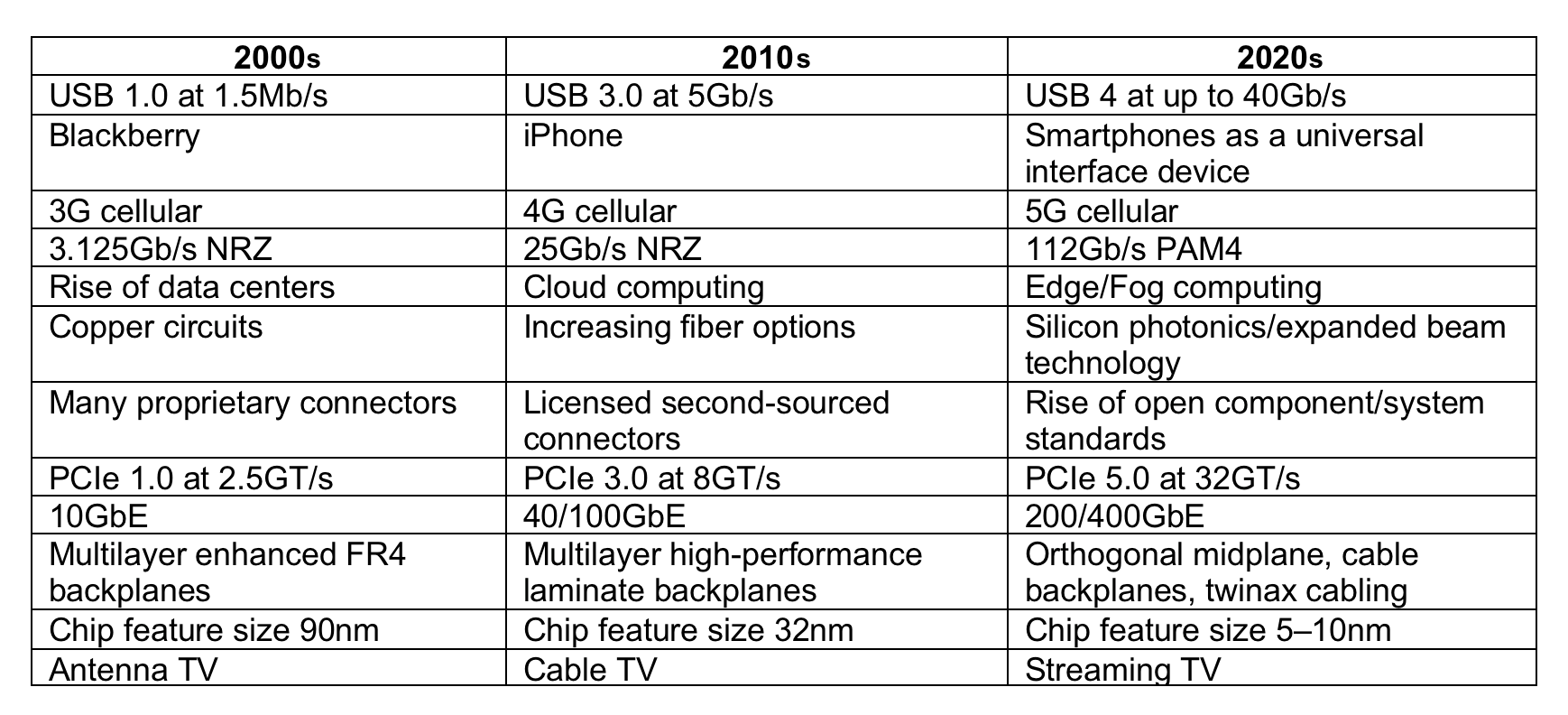
Early in the age of computers, all data was local. The first IBM computers were standalone machines that filled large, environmentally controlled rooms. Memory was provided by a combination of laced magnetic cores, removable disk packs, reel-to-reel tape, and a stack of 50 24” disks.
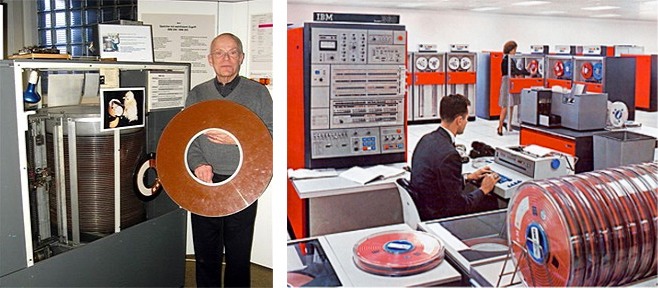
The IBM RAMAC disk drive (left) and the IBM 360 mainframe computer system (right).
Engineers chose not to upgrade the initial 5MB memory capacity, as they saw no market demand for larger storage at the time. These were hugely expensive machines and, except for a few large companies, most users simply leased time on an IBM machine. Data was moved via tape, disk, or Hollerith cards.
As demand for computing resources increased, however, the concept of multiple users remotely sharing central computing resources began to take hold. Rather than a mainframe computer, a rack of relatively inexpensive modular servers were networked to support multiple users. Early workstations were typically connected to a local area network that had access to these computing resources. By the early 1990s, the term data center came into use.
The rise of the internet in the 1997 to 2000 period spawned incredible growth for central data centers. Initially a key tool for small companies that could not afford the hardware or expertise required to operate their own facility, data centers also opened the door to consumer internet access. In addition to providing computing resources, data centers offer multiple levels of data security and redundancy.
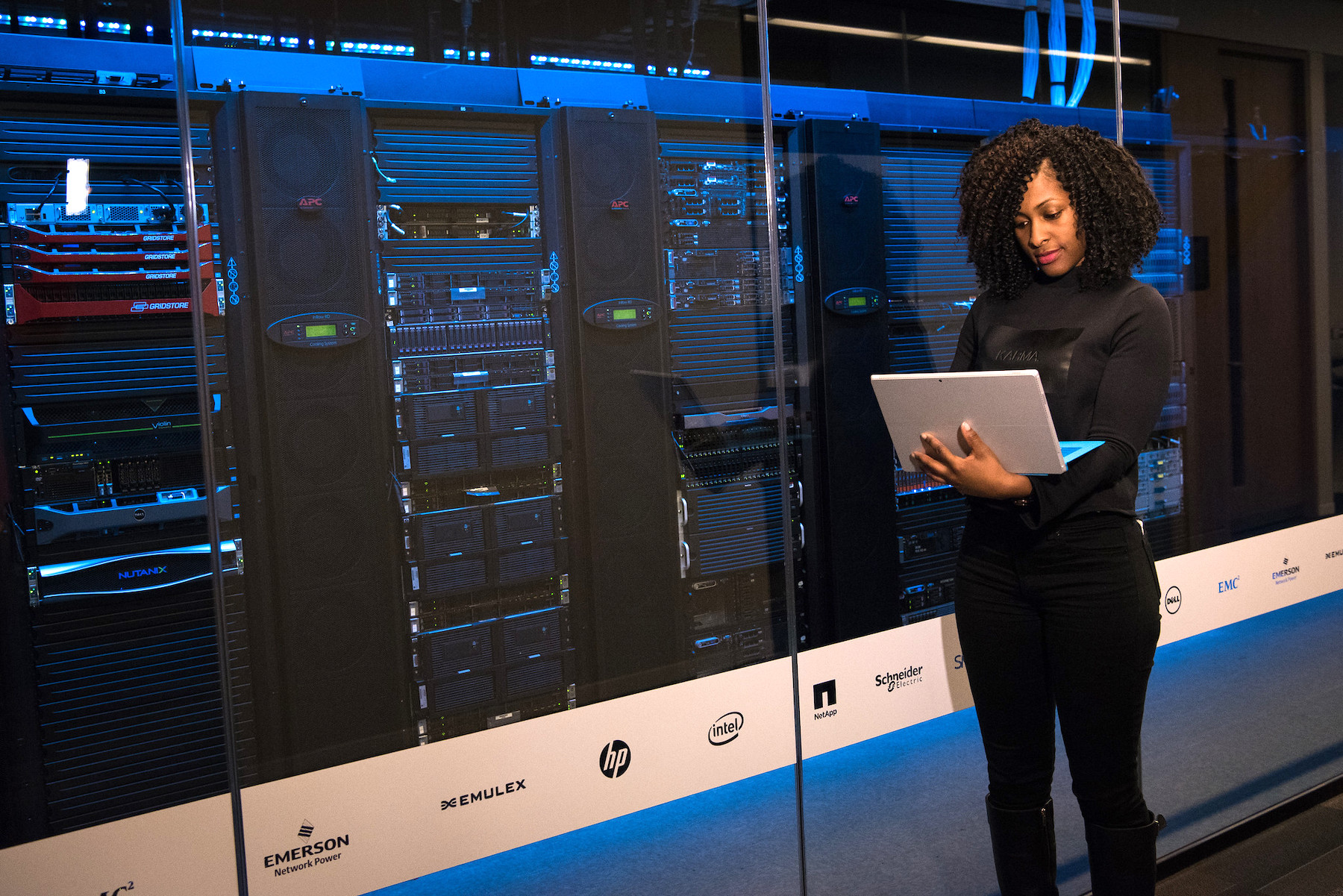
Data center image courtesy of WOCinTechChat per CC-BY-SA 2.0.
By the early 2000s, data centers had become the central hubs of telecom and datacom infrastructure. Data centers today manage telecommunication networks as well as host internal and third-party applications. Global data centers number in the thousands, are often housed in buildings so huge they are measured in acres, and consume many megawatts of power. Each day, over 25 million terabytes of data are created, including pictures, videos, websites, and tweets. According to the U.S. Chamber of Commerce, the U.S. leads the world in data centers, with a significant portion of the global data center business.
The evolution of the cloud extended the availability of computing resources that now enables on-demand access to programming and storage. This area has experienced incredible growth for the past 15 years. Instead of investing in local computing and storage equipment, users obtain these resources via connection to the internet. Cloud computing offers highly flexible access to infrastructure and software as a subscription service, rather than requiring users to purchase a physical asset. Users are able to dynamically adjust their computing resources to match real-time demand.
The cloud has taken over computing world. The past few years have seen dramatic expansion of cloud services at both the consumer and business levels. According to Right Scale’s annual State of the Cloud Report for 2019, 91% of businesses used a public cloud and 72% used a private one. Estimates for the total global market value of cloud services in 2019 range from $228 billion to $253 billion, and projected to hit $623 billion by 2023. The COVID-19 pandemic has accelerated the utilization of cloud services, which may make these forecasts conservative.
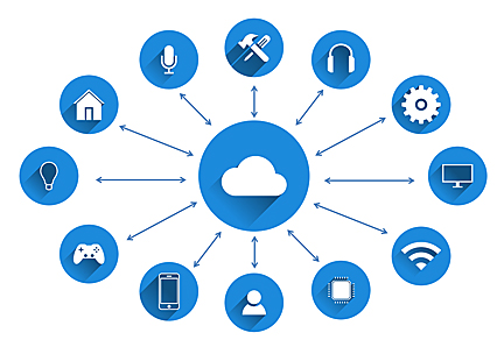 The edge introduces a new layer of computing access. This model distributes computation and storage resources close to or directly into devices located at the end user. The result is reduced latency, increased network bandwidth, and improved efficiency since long round-trip data transfers to the central cloud are minimized.
The edge introduces a new layer of computing access. This model distributes computation and storage resources close to or directly into devices located at the end user. The result is reduced latency, increased network bandwidth, and improved efficiency since long round-trip data transfers to the central cloud are minimized.
Another variation of distributed computing inserts an additional layer between the cloud and edge, dubbed the fog. The fog enables direct communication among devices at the edge and improved security.
Emerging applications that demand real-time response, such as autonomous transportation, medical devices, Internet of Things (IoT), 5G, artificial intelligence, and industrial control systems, are driving the growth of edge computing, which is progressing at an estimated 32% CAGR.
The data center, cloud, and edge are important markets for connector manufacturers because their primary function is all about connectivity.
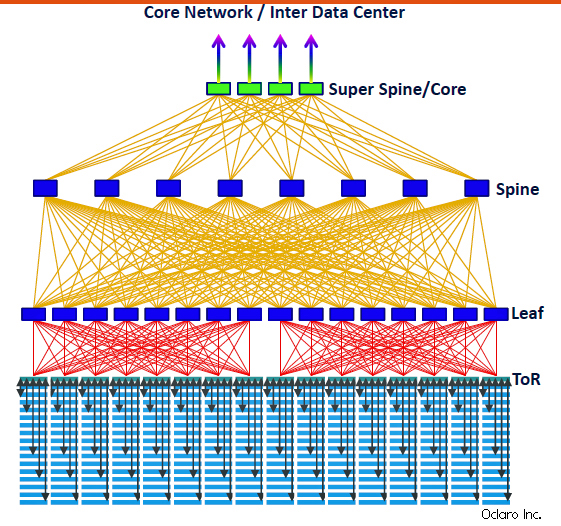
Signal and power connectors are critical components inside each server switch and router. External copper and fiber optic cables that mate with input/output (I/O) connectors on the faceplate of equipment are the backbone of the network mesh. Shielded copper cables connect to top-of-rack switches and enable inter-rack connections. High-speed fiber optic cables provide longer distance connections within data centers, as well as to campus, metro, cross-country, and intercontinental locations. Interest is growing in linking regional data centers to improve the efficient utilization of processing and storage resources as well as reliability. These connections are driving 400 Gigabit Ethernet (400GbE) coherent optical connectivity to maximize the spectral efficiency of each optical fiber. Sales of pluggable and on-board optical transceivers will benefit from this trend.
Fiber offers tremendous bandwidth advantages that enable data centers to provide a degree of future-proofing for their infrastructure. Fiber is finding applications inside the box where printed circuit board (PCB) laminate loss is unacceptable, and I/O panel density is a priority. This trend is likely to continue as incessant demand for speed and system capacity increases, and server panels become a data bottleneck.
Constant expansion and upgrading of data center equipment to keep pace with demand continues to challenge the connector industry. Data center operators are looking for efficient high-bandwidth, low-power, small-profile, and cost-effective interconnects that provide performance headroom to support the continuing evolution of online computing.
Like this article? Check out the rest of Bob’s Technology Trends Series, our other data centers, cloud computing, and networking articles, our Telecom/Datacom Market Page, and our 2020 and 2019 Article Archives.
- Optics Outpace Copper at OFC 2024 - April 16, 2024
- Digital Lighting Enhances your Theatrical Experience - March 5, 2024
- DesignCon 2024 in Review - February 13, 2024





